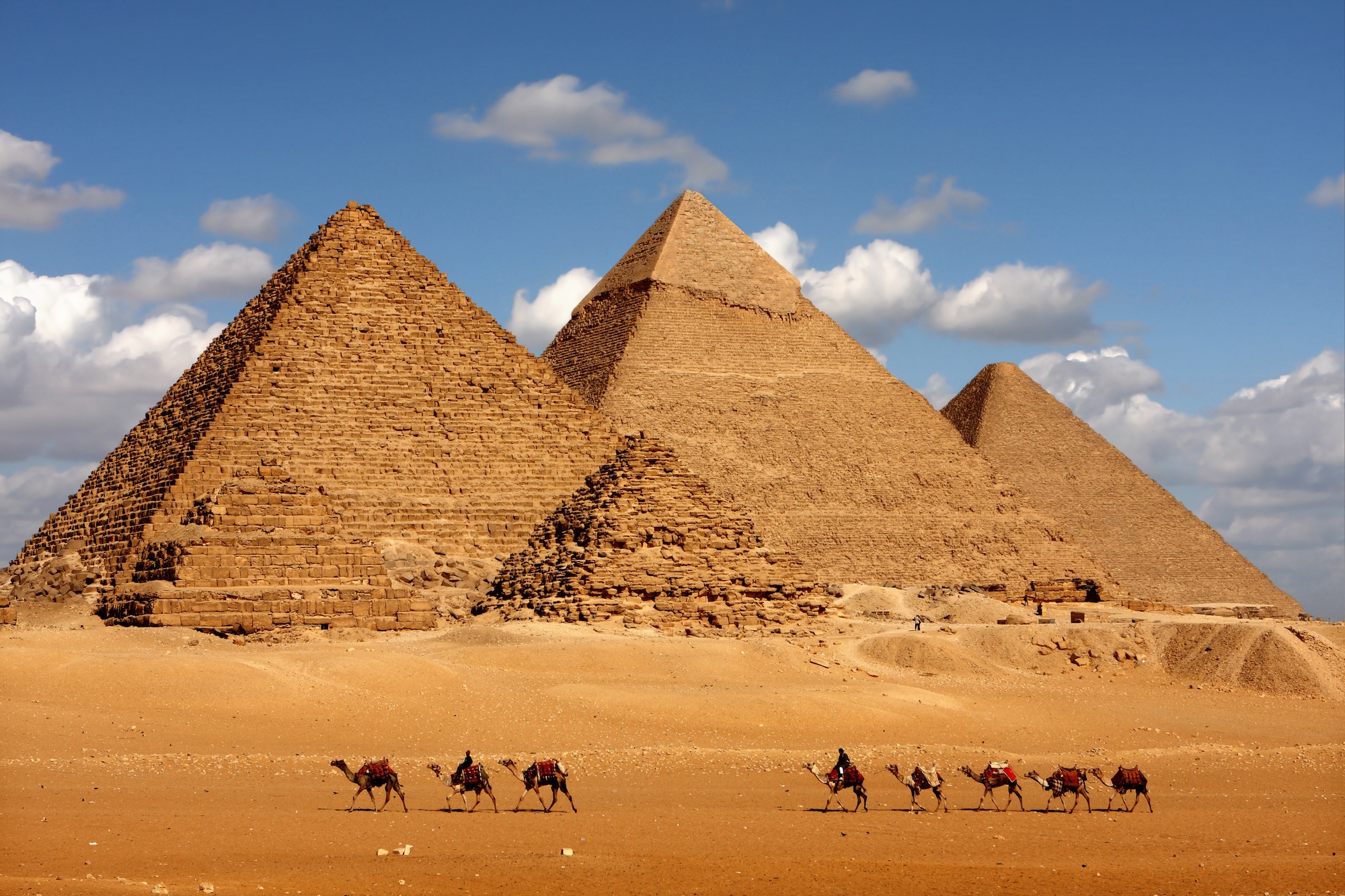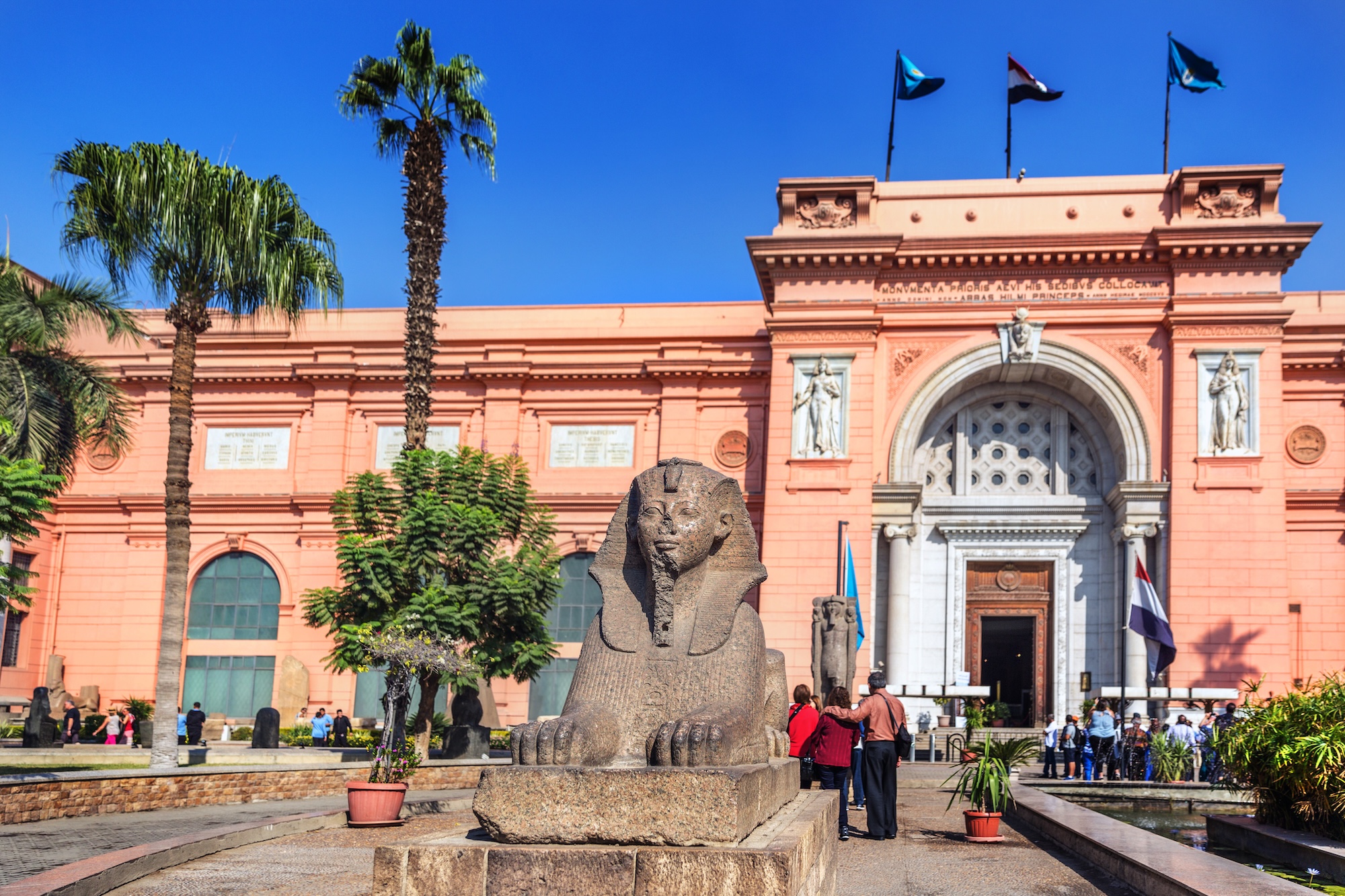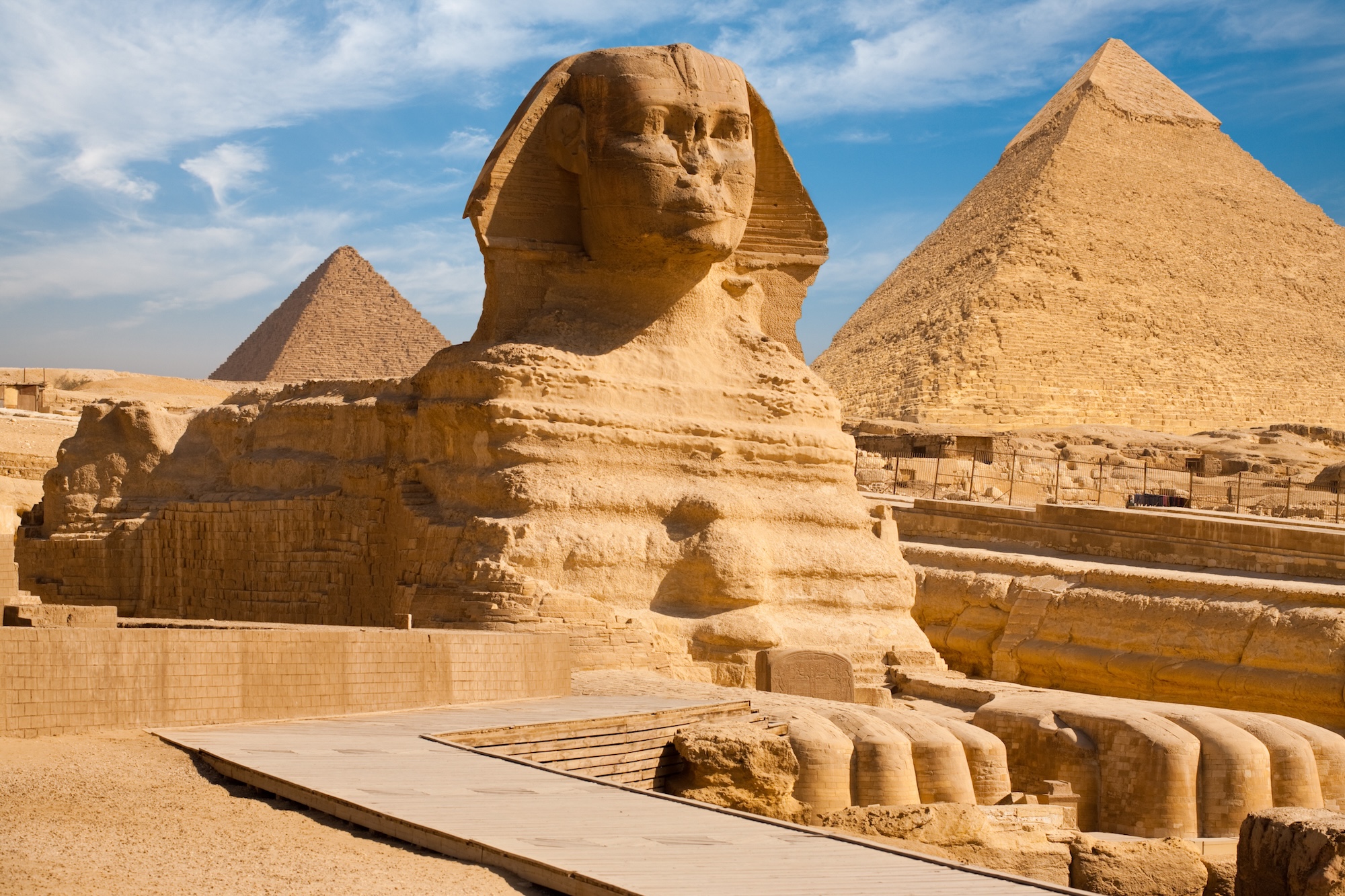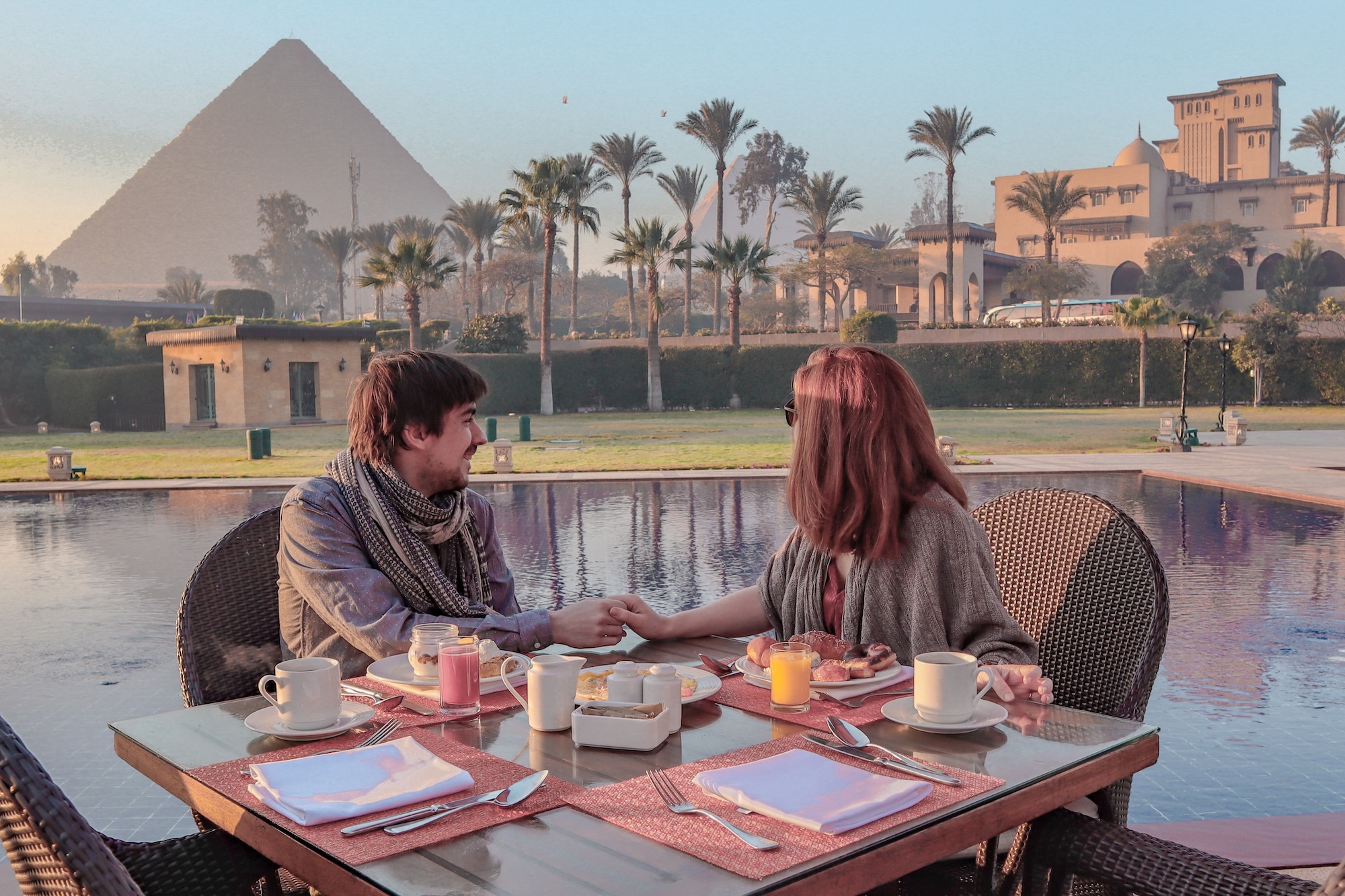
World Travel Tips
What Should You Do in Cairo?
Cairo is a bustling city full of history, culture, and some of the world’s most famous ancient landmarks. Whether you’re fascinated by ancient civilizations, looking for a glimpse into modern Egyptian life, or simply in search of stunning architecture, Cairo has something for every traveler. Here are the top 10 attractions in Cairo that every visitor should experience.
1. The Great Pyramids of Giza

The Great Pyramids of Giza are perhaps the most famous archaeological sites in the world. This ancient wonder consists of three main pyramids, the largest being the Great Pyramid of Khufu, which was once the tallest man-made structure in the world. Visitors can get up close to the pyramids and even enter some of them to explore the burial chambers.
Why visit?
These pyramids are an awe-inspiring testament to ancient Egyptian engineering and ambition. Standing before them, it’s hard not to be awestruck by their scale, mystery, and cultural significance. It’s the perfect starting point for any trip to Egypt.
2. The Egyptian Museum

The Egyptian Museum in Tahrir Square houses one of the world’s most extensive collections of ancient Egyptian antiquities. With over 120,000 artifacts, including the treasures of Tutankhamun, this museum offers an unparalleled opportunity to explore the country’s ancient history.
Why visit?
The museum allows you to step into the ancient world, offering a deeper understanding of Egypt’s culture and history. The collection of mummies, jewelry, statues, and more provides insight into the daily life and grandeur of ancient Egypt.
3. The Sphinx of Giza

Standing guard at the base of the Great Pyramids, the Sphinx of Giza is one of Egypt’s most recognizable monuments. This giant limestone statue, with the body of a lion and the head of a Pharaoh, has long been a subject of mystery and fascination.
Why visit?
Visiting the Sphinx allows you to marvel at its size and enduring mystery. It’s a unique opportunity to contemplate the myths surrounding it and witness the intersection of ancient artistry and engineering.
4. The Citadel of Saladin
The Citadel of Saladin is a massive fortress located on a hilltop offering panoramic views of Cairo. The Citadel houses several important mosques and museums, including the Mohammed Ali Mosque, which is often referred to as the “Alabaster Mosque” due to its stunning white marble structure.
Why visit?
The Citadel is a mix of history, architecture, and spectacular views. Its central location makes it an excellent spot to learn about Cairo’s Islamic history while taking in the beautiful cityscape.
5. The Mosque of Muhammad Ali
Situated within the Citadel of Saladin, the Mosque of Muhammad Ali is a breathtaking piece of Ottoman-era architecture. Built in the 19th century, its large dome and towering minarets make it one of Cairo’s most imposing landmarks.
Why visit?
This mosque’s grandeur and historical significance make it a must-see. Its elevated location provides one of the best views of Cairo, making it an ideal place to admire both the structure and the surrounding city.
6. Khan El Khalili Bazaar
For a taste of local life, the Khan El Khalili Bazaar is the perfect spot. This bustling market is famous for its narrow alleys, colorful stalls, and traditional goods, including jewelry, spices, textiles, and antiques. It’s an immersive experience that lets you see the daily hustle and bustle of Cairo.
Why visit?
The bazaar is an exciting mix of sights, sounds, and smells. It’s the perfect place to shop for souvenirs, experience local culture, and enjoy the vibrant atmosphere of one of Cairo’s oldest markets.
7. The Nile River
The Nile River is the lifeblood of Egypt, and there’s no better way to experience it than by taking a cruise or boat ride. You can choose from luxurious dinner cruises, felucca rides (traditional wooden boats), or simply relax on the riverbanks.
Why visit?
The Nile offers a peaceful respite from the chaos of the city. A boat ride is an opportunity to enjoy the beautiful scenery and reflect on the historical importance of this river to Egypt’s ancient civilization.
8. Coptic Cairo
The Coptic Cairo area is home to some of the oldest Christian sites in Egypt. Highlights include the Hanging Church, the Coptic Museum, and Ben Ezra Synagogue. This district provides a fascinating glimpse into the city’s religious history.
Why visit?
Coptic Cairo offers a unique insight into Egypt’s Christian heritage and its coexistence with ancient and modern religious practices. It’s a peaceful area with beautiful churches and historical artifacts that make for a reflective visit.
9. The Step Pyramid of Djoser
Located in Saqqara, the Step Pyramid of Djoser is considered one of the earliest pyramids in Egypt. Built during the Third Dynasty, this step pyramid is the prototype for the later smooth-sided pyramids, including the Great Pyramid of Giza.
Why visit?
This pyramid is a vital piece of ancient Egyptian architecture and offers a fascinating look at how pyramid design evolved. Its unique stepped structure makes it stand out from other pyramids in the country.
10. Al-Azhar Park
Al-Azhar Park is a beautifully landscaped public park offering a green oasis in the heart of Cairo. It’s also home to some of the city’s most significant historical landmarks, such as Al-Azhar Mosque and the Sultan Hassan Mosque.
Why visit?
Al-Azhar Park is a peaceful escape from the urban sprawl of Cairo. Visitors can enjoy lush gardens, stroll through historical sites, and take in stunning views of Cairo’s skyline and ancient mosques.
Seasonal Recommendations
🍁 Autumn (October-November): Autumn is the most popular time to visit Cairo, thanks to its comfortably warm days and cooler evenings. Temperatures generally range from the mid-70s to mid-80s °F (24–29°C), making it ideal for exploring the city’s outdoor wonders without the intense summer heat. This is a perfect time for visiting the Great Pyramids of Giza and the Sphinx, as the sun is more forgiving and the crowds are lively but manageable. Nile cruises are especially pleasant during this season, offering a scenic and breezy escape from the city bustle.
🌸 Spring (March-May): Spring is another fantastic time to explore Cairo, with mild temperatures ranging from the upper 60s to mid-80s °F (20–29°C). While occasional sandstorms (known as the Khamsin winds) may occur, they’re usually brief and don’t overshadow the overall pleasant weather. It’s a great season for strolling through Al-Azhar Park or wandering the historic alleyways of Khan El Khalili Bazaar. Tourist activity begins to pick up, but it’s still easy to enjoy attractions without long wait times.
❄️ Winter (December-February): Winter in Cairo is mild and often sunny, with daytime temperatures ranging from the upper 50s to low 70s °F (15–22°C). This cooler climate makes it an ideal season for indoor attractions like the Egyptian Museum or exploring the ancient churches and narrow lanes of Coptic Cairo. It’s also a lovely time to sit at a café along the Nile River, especially during Cairo’s festive New Year and holiday season. While it’s not beach weather, it’s great for sightseeing without the heat.
☀️ Summer (June-September): Summer is the least popular time for tourists in Cairo due to high temperatures that often exceed 100°F (38°C), especially in July and August. However, those who can handle the heat will find fewer crowds and lower prices. Early morning or evening visits to sites like the Citadel of Saladin or the Mosque of Muhammad Ali are recommended to avoid peak sun. Indoor experiences become more appealing, and air-conditioned museums and shopping spots offer welcome relief.
Cairo Excursions
Tips for Your Visit
Getting Around
- Use Ride-Hailing Apps: Uber and Careem are widely available in Cairo and offer a convenient, reliable, and safe way to get around the city. They are often more affordable than traditional taxis.
- Public Transport: Cairo has an extensive metro system, which is a quick and affordable way to navigate the city, especially during rush hour. Be prepared for crowded conditions, particularly in the central areas.
- Traffic Tips: Cairo is known for its heavy traffic, so plan accordingly and allow extra time for travel, especially if you’re heading to popular tourist spots.
Local Cuisine
- Try Koshari: This beloved Egyptian comfort food is a hearty mix of rice, lentils, pasta, and fried onions, topped with a tangy tomato sauce. It’s a must-try street food.
- Sample Egyptian Street Food: Savor other local dishes like falafel (ta’ameya), shawarma, and stuffed vine leaves from street vendors for an authentic taste of Cairo.
- Drink Bottled Water: While Egyptian food is delicious, it’s advisable to drink bottled water instead of tap water to avoid potential stomach issues.
Language
- Basic Arabic Phrases: While many people in Cairo speak English, learning a few Arabic phrases like “Shukran” (Thank you) and “Min fadlak” (Please) will be appreciated by locals.
- English in Tourist Areas: English is commonly spoken in most tourist areas, hotels, and restaurants, but it’s still helpful to know some basic phrases for easier communication with locals in more remote areas.
Safety
- Stay Alert in Crowded Areas: Cairo can be crowded, particularly in markets and tourist sites. Keep an eye on your belongings and avoid flashy displays of wealth.
- Secure Your Valuables: It’s a good idea to use a money belt or keep your valuables in a secure, hidden location when walking through busy areas or on public transport.
- Local Scams: Be cautious of overly friendly individuals offering unsolicited help or guides. It’s always best to book tours through reputable agencies or your hotel.
3 Popular Restaurants
Cairo is a city that offers an exciting mix of traditional and modern dining experiences, with a vibrant food scene that caters to all tastes. Whether you’re craving authentic Egyptian dishes or looking for something with a contemporary twist, the city’s diverse range of restaurants never disappoints. From classic local favorites to chic riverside spots, here are three of the most popular restaurants in Cairo that you shouldn’t miss.
1. Abou El Sid
Location: 157 26th of July Corridor, Mohammed Mazhar, Zamalek, Cairo Governorate 4271050, Egypt View On Map
Cuisine: Traditional Egyptian / Middle Eastern
Why It’s Popular: Abou El Sid is one of Cairo’s most iconic restaurants, known for its authentic Egyptian and Middle Eastern cuisine. The restaurant’s cozy, traditional setting reflects the rich culture of old Cairo, offering a wide variety of flavorful dishes such as koshari, molokhia, and grilled meats. Its consistent quality and friendly atmosphere have made it a favorite among locals and tourists looking to experience traditional Egyptian dishes in a comfortable, homestyle environment.
What Makes It Stand Out: Abou El Sid stands out with its deep roots in Egyptian culinary traditions, providing an authentic and unforgettable experience. The warm ambiance and generous portions of authentic, hearty dishes make it an essential stop for anyone craving true Egyptian flavors.
2. Nile Pharaohs
Location: 138 Nile St, Oula, Al Giza, Giza Governorate 3726552, Egypt View On Map
Cuisine: Egyptian / Mediterranean
Why It’s Popular: Nile Pharaohs offers a unique dining experience with a stunning view of the Nile River. Known for its upscale atmosphere and diverse menu that combines Egyptian flavors with Mediterranean influences, Nile Pharaohs is perfect for those looking to enjoy a meal while taking in the beautiful riverfront setting. The restaurant’s buffet-style dining and traditional Egyptian fare, alongside international options, make it a favorite among both locals and tourists.
What Makes It Stand Out: The exceptional Nile view and elegant decor set the scene for a memorable meal. The fusion of Egyptian and Mediterranean cuisines, paired with the luxurious environment, makes Nile Pharaohs a must-visit spot for anyone wanting to dine in style along the river.
3. Zooba
Location: 16 26 July St, Al Gabalayah, Zamalek, Giza Governorate 4270123, Egypt View On Map
Cuisine: Egyptian Fusion / Street Food
Why It’s Popular: Zooba is a contemporary twist on traditional Egyptian street food, offering a fresh, modern approach to beloved local dishes. The menu features creative renditions of favorites like koshari, falafel, and ta’ameya, with an emphasis on using fresh, high-quality ingredients. The restaurant’s vibrant, trendy atmosphere, combined with its innovative take on Egyptian classics, has made it a favorite for both locals and visitors looking for an updated food experience.
What Makes It Stand Out: Zooba stands out by blending modern design with authentic Egyptian flavors, turning everyday street food into an elevated culinary experience. Its bold, fresh flavors and Instagram-worthy dishes have earned it a place as one of Cairo’s most exciting dining spots.
Tips for Dining in Cairo
Cairo, Egypt, is a city that thrives on its rich history, culture, and, of course, its incredible food scene. From bustling street markets to elegant dining establishments along the Nile, the city offers a culinary adventure that reflects its diverse and ancient heritage. Whether you’re savoring traditional Egyptian dishes or exploring fusion cuisine, dining in Cairo can be an unforgettable experience. However, there are a few tips that can help ensure you enjoy the local flavors safely and confidently. Here’s your guide to navigating the food scene in Cairo!
1. Savor Local Flavors, but Stay Mindful of Street Food
Egyptian street food is a must-try and offers a wide variety of dishes, from falafel (ta’ameya) and koshari to stuffed grape leaves. These foods are deeply embedded in the local culture and provide a flavorful glimpse into everyday Egyptian life.
Tip: While street food is part of the charm of Cairo, make sure you eat from vendors with a high turnover of customers to ensure the food is fresh. Also, opting for foods that are cooked to order can minimize your risk of consuming food that has been sitting out for too long.
2. Don’t Miss Egyptian Specialties
When dining in Cairo, certain dishes are non-negotiable! Koshari, a hearty mix of rice, lentils, pasta, and crispy onions topped with a tangy tomato sauce, is a local favorite. Also, try a plate of molokhia, a savory green soup made from jute leaves, or grilled meats, often served with a side of fresh bread.
Tip: Ask the locals or your waiter for the “special of the day” at restaurants—it’s often a seasonal dish or something that isn’t always on the menu. It’s a great way to experience authentic, off-the-beaten-path flavors.
3. Be Prepared for a Traditional Dining Experience
In Cairo, meals are often a social event, and it’s not unusual for restaurants to serve dishes that are meant to be shared. Egyptian dining is about community and hospitality, so don’t be surprised if your meal comes with an array of shared plates.
Tip: Use the bread to scoop your food rather than utensils in traditional settings. It’s a fun and authentic way to enjoy your meal, and it’s perfectly acceptable in many Egyptian restaurants.
4. Drink Bottled Water Only
While the food in Cairo is delicious, the tap water can be unpredictable for visitors. To avoid stomach issues, always opt for bottled water during your meals. Most restaurants will serve bottled water, but it’s wise to check that the seal is intact before drinking.
Tip: Carry a bottle of water with you, especially when exploring markets or enjoying a day out in the city. It’s also a good idea to avoid ice, as it may be made from tap water.
5. Be Cautious with Tipping
Tipping is customary in Egypt and a key part of the service industry. In restaurants, it’s typical to leave a 10% tip, though in smaller establishments or street food stalls, rounding up the bill is appreciated.
Tip: Carry small bills for tipping, as restaurant staff will expect tips for their service. Don’t be shy to offer tips, as it’s part of the culture and a way to show appreciation for good service.
6. Mind the Meal Times
In Cairo, meal times are different from what you might be used to. Lunch is the main meal of the day, often served between 1 p.m. and 4 p.m., while dinner is typically lighter and served around 8 p.m. or later.
Tip: If you’re dining in the evening, be prepared for places to be busier as the night progresses. It’s common for restaurants to be more crowded after sunset, especially near popular tourist spots and along the Nile.
Conclusion
Dining in Cairo is an experience that combines ancient traditions, bold flavors, and a welcoming atmosphere. Whether you’re enjoying street food or sitting down to a more refined meal, the city offers endless opportunities to indulge in its vibrant culinary scene. By keeping these tips in mind, you can navigate the food culture with ease and make the most of your culinary journey through Cairo. Bon appétit, or as the Egyptians say, Sahtein! (Two healths to you!)









